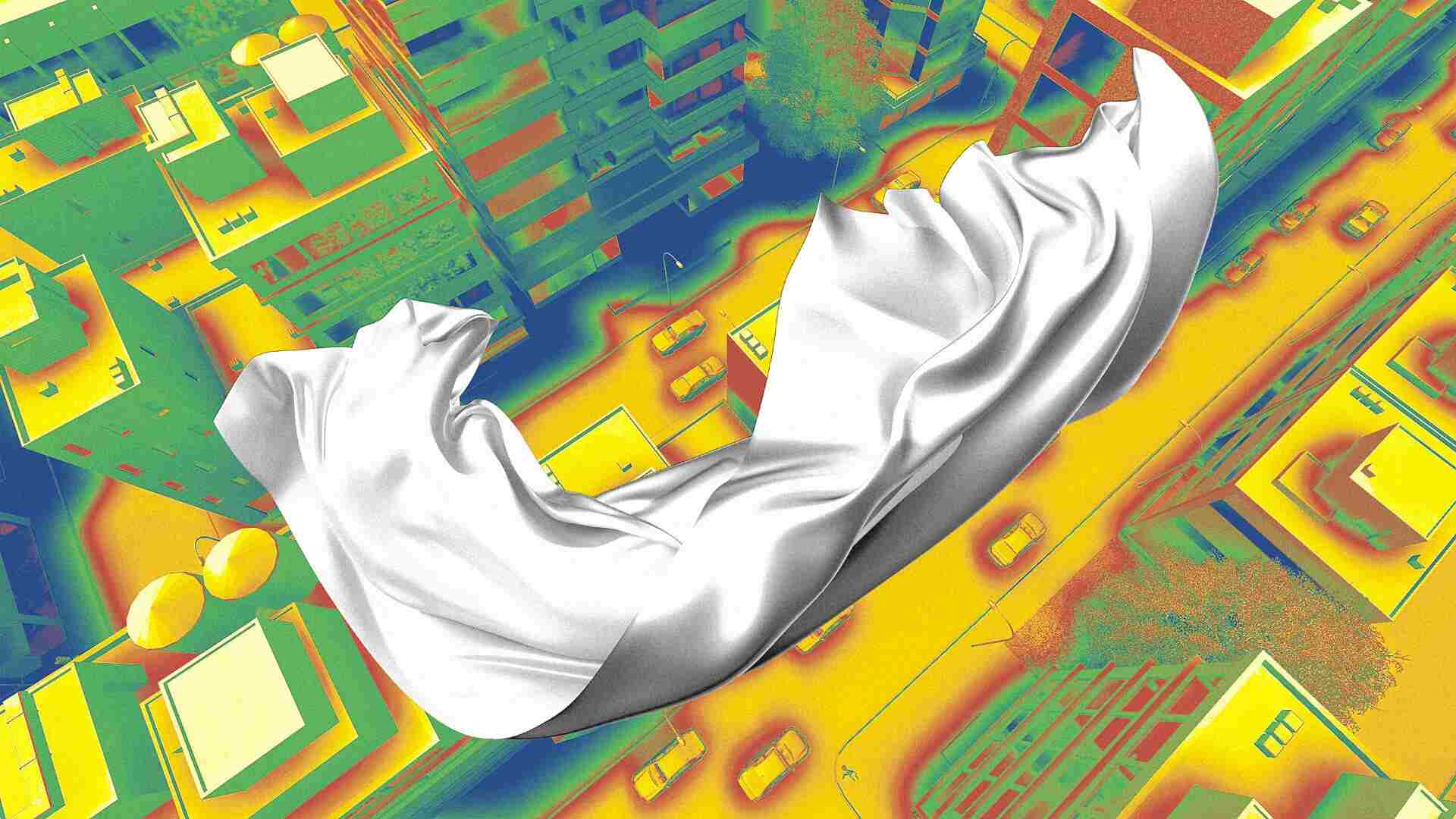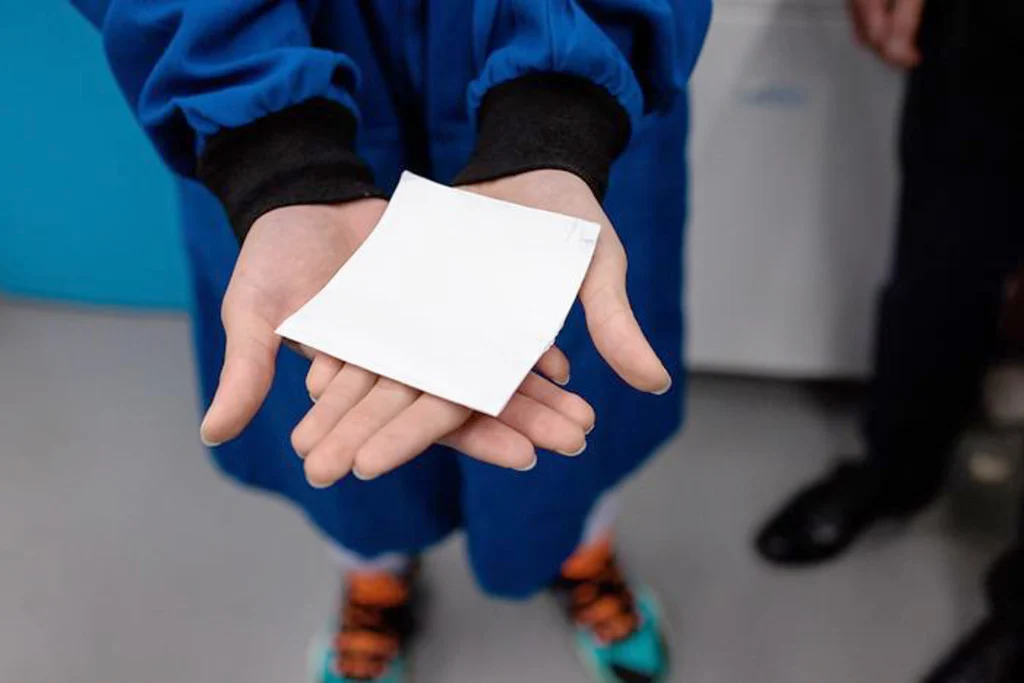- | 9:00 am
This impossibly thin fabric could cool you down by 16-plus degrees
The new textile was designed to combat the urban heat island effect, reflecting both the sun’s heat and the heat that bounces off of buildings and streets.

When a heat wave hits a city, the sidewalks, roads, and buildings end up making the air feel even hotter. Thanks to the urban heat island effect, all that infrastructure absorbs and then reemits the sun’s heat, raising temperatures even more.
Getting cool, then, means protecting yourself not just from the sun’s radiation but also from all the radiation bouncing off the pavement and concrete. A new textile—made of plastic and silver nanowires—does just that, and can keep its wearers as much as 16 degrees cooler than other fabrics.

Heat is becoming a serious issue in our warming world. This week, a heat wave is expected to stretch across much of the U.S., with particularly dangerous temperatures forecasted for cities such as Chicago, New York, and Boston. These temperatures are driven by a heat dome, a phenomenon in which a pocket of hot air sits trapped over a region for a prolonged period of time. A heat dome that descended on Portland, Oregon, in 2021 saw temperatures hit 116 degrees Fahrenheit; 69 people died in Multnomah County.
On top of that, as we experience higher temperatures, many people also crank up their air conditioners—which emit more heat-trapping greenhouse gases into the atmosphere.
This new textile could provide at least a little relief. It uses a process called radiative cooling, which describes how objects cool down by radiating thermal energy into their surroundings. Radiative cooling textiles do already exist, but most just reflect the sun’s heat. That “works very well if you’re in an open field,” says Po-Chun Hsu, a molecular engineering professor at the University of Chicago, whose team recently published a paper on their new material in the journal Science. But not in a city.
What those other fabrics don’t do is reflect the ambient heat coming from the street below or a nearby building. The heat coming directly from the sun’s rays and the heat emitted from a sun-baked street aren’t the same; they have different wavelengths. That means a material has to have two different “optical properties” to reflect both.
To do that, the researchers created a three-layer textile. The top layer is made of polymethylpentene or PMP, a type of plastic commonly used for packaging; the researchers had to figure out how to spin it into a fiber. The second is a sheet of silver nanowires, which acts like a mirror to reflect infrared radiation. Together, these block both the solar radiation and the ambient radiation reflected off of surfaces. The third layer can be any conventional fabric, like wool or cotton. Though there are multiple layers, the main thickness comes from the conventional fabric; the top layer is about 1/100th of a human hair.
In outdoor tests in Arizona, the textile stayed 4.1 degrees Fahrenheit (2.3 degrees Celsius) cooler than “broadband emitter” fabrics used for outdoor sports, and 16 F (8.9 C) cooler than regular silk, a breathable fabric often used for dresses and shirts.
Along with clothing, the researchers say this cooling textile could be used on buildings, in cars, or even for food storage and shipping in order to lessen the need for refrigeration, which has a significant climate impact of its own. Next, Hsu’s team is collaborating with other teams to see how the textile could have a health benefit for those in extreme heat conditions.
Heat stress is actually the leading cause of weather-related deaths, according to the World Health Organization, and high temperatures can exacerbate issues like cardiovascular disease or diabetes. As climate change makes heat waves more common and more severe, it’s increasing the number of people exposed to this heat, and the potential health risks they face. The researchers know their fabric can cool skin temperatures, but “how does that translate to actual public health benefits?” Hsu says. “That will be important to bring this to the next step.”








































